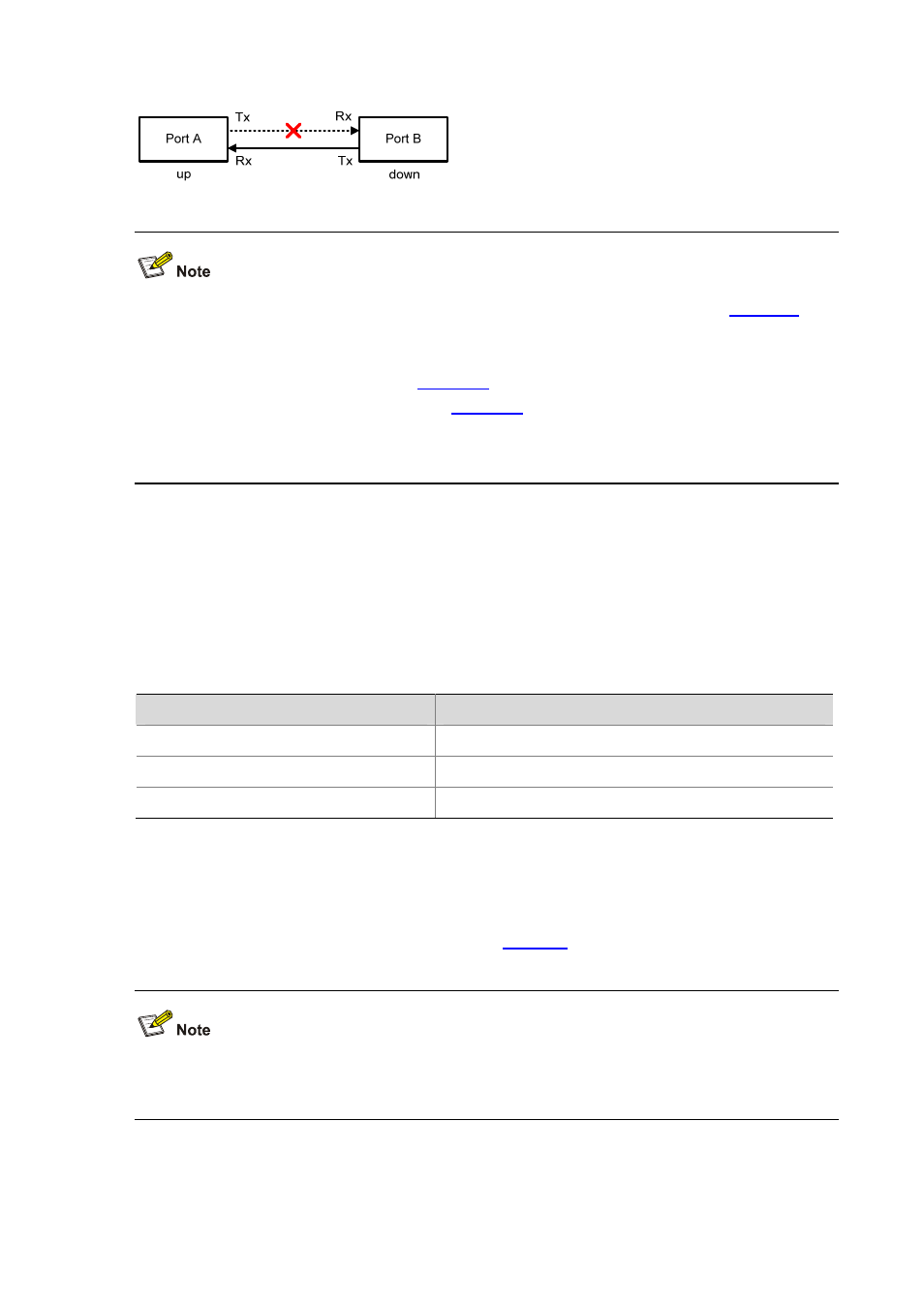Dldp implementation – H3C Technologies H3C S3100 Series Switches User Manual
Page 196

1-7
Figure 1-3 A case for Enhanced DLDP mode
z
In normal DLDP mode, only fiber cross-connected unidirectional links (as shown in
) can
be detected.
z
In enhanced DLDP mode, two types of unidirectional links can be detected. One is fiber
cross-connected links (as shown in
). The other refers to fiber pairs with one fiber not
connected or disconnected (as shown in
). To detect unidirectional links that are of the
latter type, you need to configure the ports to operate at specific speed and in full duplex mode.
Otherwise, DLDP cannot take effect.
DLDP Implementation
1) If the DLDP-enabled link is up, DLDP sends DLDP packets to the peer device, and
analyzes/processes the DLDP packets received from the peer device. DLDP packets sent in
different DLDP states are of different types.
Table 1-5 DLDP state and DLDP packet type
DLDP state
Type of the DLDP packets sent
Active Advertisement
packets,
with the RSY flag set or not set.
Advertisement Advertisement
packets
Probe Probe
packets
2) A DLDP packet received is processed as follows:
z
In authentication mode, the DLDP packet is authenticated and is then dropped if it fails the
authentication.
z
The packet is further processed, as described in
.
You can prevent network attacks and illegal detect through DLDP authentication. Three DLDP
authentication modes exist: non-authentication, plain text authentication, MD5 authentication.